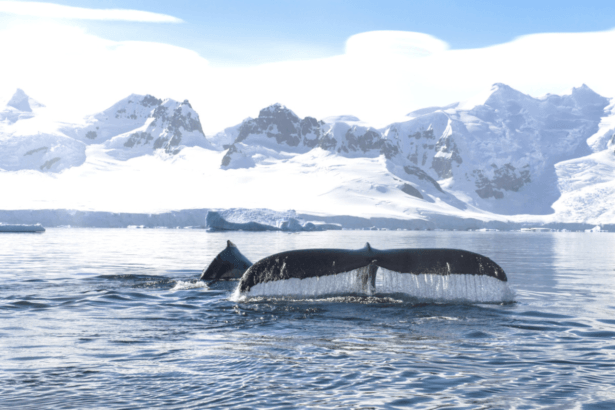Many people planning a trip to California wonder, “When is whale watching season in San Diego?” If you are one of them, you will be pleased to know that San Diego whale watching can take place at almost any time of the year. Certain species of whale appear off the coastline during particular months as their annual migration takes place. Other species may be visible year round. Therefore, the best time to go whale watching in San Diego may depend on your schedule and what species you’re most interested in seeing.
June Through September
Summer whale watching San Diego is most likely to feature blue whales, the largest animal on Earth and one of the largest that ever lived. Blue whales are the most endangered of all whale species, but they gather in the thousands off the California coast during the summer and early autumn to feast on the krill that thrive in the warm waters.
While some species of whales may venture close enough to the coastline that whale watchers can observe them from shore, blue whales typically remain in the open ocean. This means that whale watchers must take a boat in order to see them.
However, blue whales are not the only species that may be seen in the area during the summer months. Additionally, you may see humpback whales in the waters around San Diego around the same timeframe, as well as orcas early in the season.
December Through April
When people ask themselves, “Where can I find whale watching near me?” it is usually during the winter and spring. That is because a massive migration of gray whales takes place during these months. Gray whales are much more plentiful than blue whales. Approximately 30,000 individuals take part in their annual migration from the waters of Alaska to Mexico and back again.
Gray whales’ summer feeding grounds are located in the Arctic, but their winter calving lagoons are located off the Mexican coast. While you’re likely to see gray whales migrating southward during the months of October through February, if you’d like to see baby whales, you should delay your trip until the latter part of the season in February through April, when the calves will be traveling northward with their mothers.
In addition to gray whales, you are most likely to see fin whales during the winter. Also known as the finback whale, these impressive creatures weigh up to 70 tons and can be up to 70 feet long, making them the second-largest whale species in the world.
All Year
Some species of whales, like the Minke whale, can be found off the San Diego coast at all times of the year. In addition to whales, you also may have the chance to see one or more of the species of dolphins and porpoises that make their homes in these waters. Each has unique features and characteristics. Examples include the common dolphin, the Pacific white-sided dolphin, Risso’s dolphin, and the bottlenose dolphin.
Whale watching by boat offers a unique opportunity to meet these magnificent creatures at their own level. Find out more about how you can book a whale watching tour.

